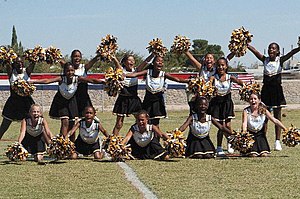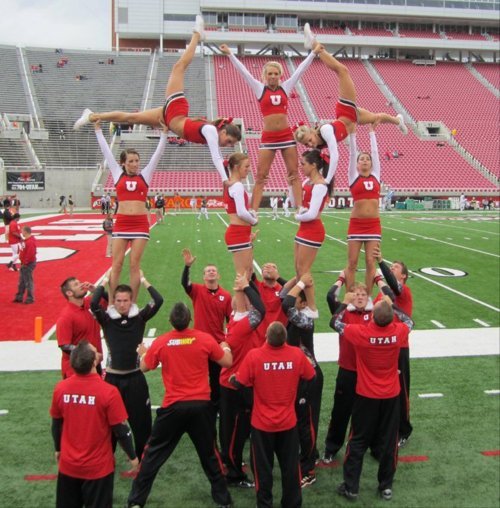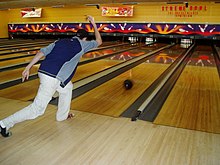Cheerleading Definition :
Cheerleading is a physical activity, sometimes a competitive sport, based on organized routines, usually ranging from one to three minutes, which contain the components of tumbling, dance, jumps, cheers and stunting to direct spectators of events to cheer on sports teams at games or to participate in competitions. The athlete involved is called a cheerleader. Cheerleading originated in the United States, and remains a predominantly American activity, with an estimated 1.5 million participants in all-star cheerleading. The growing presentation of cheerleading as a sport to a global audience was led by the 1997 start of broadcasts of cheerleading competition by ESPN International and the worldwide release of the 2000 film Bring It On. Due in part to this recent exposure, there are now an estimated 100,000 participants scattered around the rest of the world in countries including Australia, Canada, China, Colombia, Finland, France, Germany, Japan, the Netherlands, New Zealand and the United Kingdom.
As early as 1877, Princeton University had a "Princeton Cheer", documented in the February 22, 1877, March 12, 1880, and November 4, 1881, issues of the Daily Princetonian. This cheer was yelled from the stands by students at games, as well as by the baseball and football athletes themselves. The cheer, "Hurrah! Hurrah! Hurrah! Tiger! S-s-s-t! Boom! A-h-h-h!" remains in use with slight modifications today and is now referred to as the "Locomotive".
Princeton class of 1882 graduate Thomas Peebles moved to Minnesota in 1884, and transplanted the idea of organized crowds cheering at football games to the University of Minnesota. The term "Cheer Leader" had been used as early as 1897, with Princeton's football officials having named three students as Cheer Leaders: Thomas, Easton and Guerin from Princeton's classes of 1898, 1898 and 1899, respectively, on October 26, 1897; these students would cheer for the team also at football practices, and special cheering sections were designated in the stands for the games themselves for both the home and visiting teams.




















Cheerleading is a physical activity, sometimes a competitive sport, based on organized routines, usually ranging from one to three minutes, which contain the components of tumbling, dance, jumps, cheers and stunting to direct spectators of events to cheer on sports teams at games or to participate in competitions. The athlete involved is called a cheerleader. Cheerleading originated in the United States, and remains a predominantly American activity, with an estimated 1.5 million participants in all-star cheerleading. The growing presentation of cheerleading as a sport to a global audience was led by the 1997 start of broadcasts of cheerleading competition by ESPN International and the worldwide release of the 2000 film Bring It On. Due in part to this recent exposure, there are now an estimated 100,000 participants scattered around the rest of the world in countries including Australia, Canada, China, Colombia, Finland, France, Germany, Japan, the Netherlands, New Zealand and the United Kingdom.
As early as 1877, Princeton University had a "Princeton Cheer", documented in the February 22, 1877, March 12, 1880, and November 4, 1881, issues of the Daily Princetonian. This cheer was yelled from the stands by students at games, as well as by the baseball and football athletes themselves. The cheer, "Hurrah! Hurrah! Hurrah! Tiger! S-s-s-t! Boom! A-h-h-h!" remains in use with slight modifications today and is now referred to as the "Locomotive".
Princeton class of 1882 graduate Thomas Peebles moved to Minnesota in 1884, and transplanted the idea of organized crowds cheering at football games to the University of Minnesota. The term "Cheer Leader" had been used as early as 1897, with Princeton's football officials having named three students as Cheer Leaders: Thomas, Easton and Guerin from Princeton's classes of 1898, 1898 and 1899, respectively, on October 26, 1897; these students would cheer for the team also at football practices, and special cheering sections were designated in the stands for the games themselves for both the home and visiting teams.
Cheerleading

Cheerleading
Cheerleading

Cheerleading

Cheerleading

Cheerleading

Cheerleading

Cheerleading

Cheerleading

Cheerleading

Cheerleading

Cheerleading

Cheerleading

Cheerleading

Cheerleading

Cheerleading

Cheerleading
Cheerleading

Cheerleading

Cheerleading







































